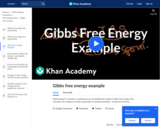
Determining if a reaction is spontaneous by calculating the change in Gibbs Free Energy.
- Subject:
- Physical Science
- Physics
- Material Type:
- Lesson
- Provider:
- Khan Academy
- Author:
- Khan Academy
- Date Added:
- 04/14/2016

Determining if a reaction is spontaneous by calculating the change in Gibbs Free Energy.
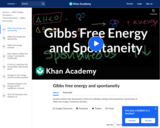
Intuition behind why spontaneity is driven by enthalpy, entropy and temperature. Introduction to Gibbs free energy.

Did you know that glaciers hold nearly 2% of Earth's water?
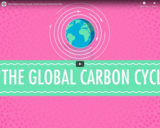
The video resource "The Global Carbon Cycle - Crash Course Chemistry #46" is included in the "Chemistry" course from the resources series of "Crash Course". Crash Course is a educational video series from John and Hank Green.
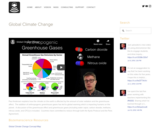
Paul Andersen explains how the climate on the earth is affected by the amount of solar radiation and the greenhouse affect. The addition of anthropogenic greenhouse gases has led to global warming which is impacting humans on the planet. A discussion of the greenhouse effect and greenhouse gases (including water vapor, carbon dioxide, methane, nitrous oxide, and CFCs) is included. Countries have committed to reduce through both the Kyoto Protocol and the Paris Agreement.

Have you seen a Clean Coal baseball cap? In the challenge to meet soaring energy demand with limited resources, volatile issues like those related to the environment, national security and public health are often addressed outside of normal market transactions and are called externalities, or nonmarket factors. Stakeholders can act in resourceful ways to create a nonmarket environment that best serves their interest. A firm may challenge a law that makes it expensive or difficult to do business or compete with others, for example. An individual may organize a boycott of products or services that violate the individual's interests or principles--hey, don't buy from them! Nonmarket strategy in the energy sector is the subject of this engaging course.
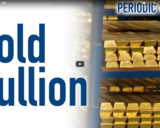
We're INSIDE a Gold Bullion Vault. The Bank of England protects about £197 billion ($315bn) worth of gold, according to the mostly recently published figures.

This lesson introduces the MRI Safety Grand Challenge question. Students are asked to write journal responses to the question and brainstorm what information they will need to answer the question. The ideas are shared with the class and recorded. Students then watch a video interview with a real life researcher to gain a professional perspective on MRI safety and brainstorm any additional ideas. The associated activity provides students the opportunity to visualize magnetic fields.

Students are introduced to the Robotics Peripheral Vision Grand Challenge question. They are asked to write journal responses to the question and brainstorm what information they require to answer the question. Their ideas are shared with the class and recorded. Then, students share their ideas with each other and brainstorm any additional ideas. Next, students draw a basis for the average peripheral vision of humans and then compare that range to the range of two different focal lengths in a camera. Through the associated activity provides, students see the differences between human and computer vision.

Lying directly south of New Orleans on Louisianas coast, Grand Isle often bears the brunt of strong waves and storm surge in the Gulf of Mexico. To protect this town and inland parishes from flooding, engineers constructed a first line of defense.
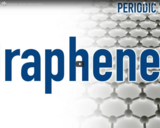
A short discussion of graphene, as its discoverers are awarded the Nobel Prize in Physics.
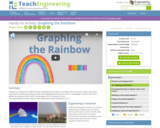
Students are introduced to different ways of displaying visual spectra, including colored "barcode" spectra, like those produced by a diffraction grating, and line plots displaying intensity versus color, or wavelength. Students learn that a diffraction grating acts like a prism, bending light into its component colors.

Paul Andersen explains how the gravitational field strength is directly related to the mass of the object and indirectly related to the square of the distance from the center of mass. The equation for gravitational field strength was discovered by Sir Isaac Newton and contains a gravitational constant.
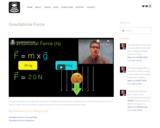
Paul Andersen explains how an object with mass placed in a gravitational field experiences a gravitational force. On the Earth this gravitational force is known as weight. The gravitational force is equal to the product of the mass and the gravitational field strength.

Paul Andersen explains how gravitational forces differ from the other three fundamental forces; electromagnetic, strong, and weak. Gravitational forces are always attractive and operate at all scales. Even though gravitational forces are relatively small they dominate at the large scale.

Paul Andersen explains how the gravitational mass is a measure of the force on an object in a gravitational field. The gravitational mass is based on the amount of material in an object and can be measured to a standard kg using a balance.
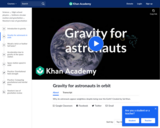
Why do astronauts appear weightless despite being near the Earth?

The video resource "The Gravity of the Situation: Crash Course Astronomy #7" is included in the "Astronomy" course from the resources series of "Crash Course". Crash Course is a educational video series from John and Hank Green.

Faced with the potential of a large expense related to water quality, the Portland (Maine) Water District performed a thorough analysis of their options. Their choice came down to making an investment in conservation or concrete.
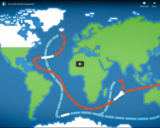
Learn about the role of the sea in global warming. The global conveyer belt is part of the large-scale ocean circulation that is driven by differences in the density of the waters. It plays a key role in keeping the climate at balance and Europe warm. Global warming may change it forever with unforeseeable consequences. The video "The Gulf Stream Explained" is a resource included in the Meteorology topic made available from the Kurzgesagt open educational resource series.